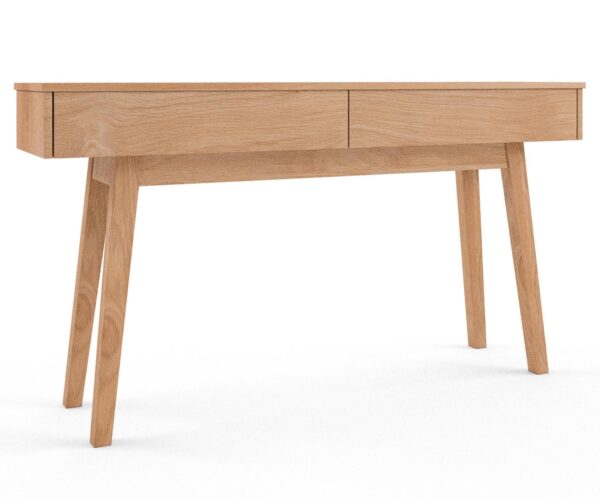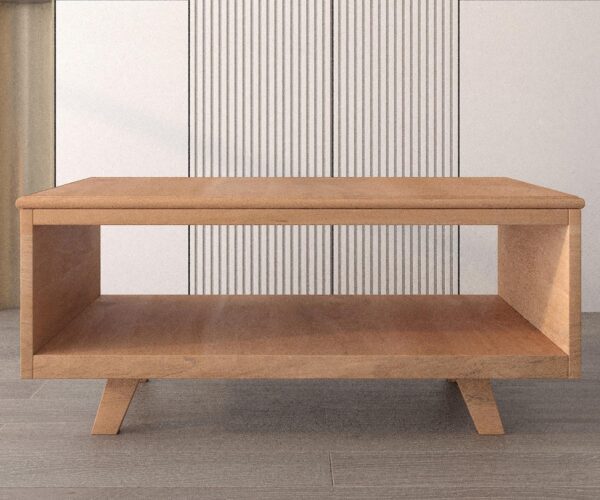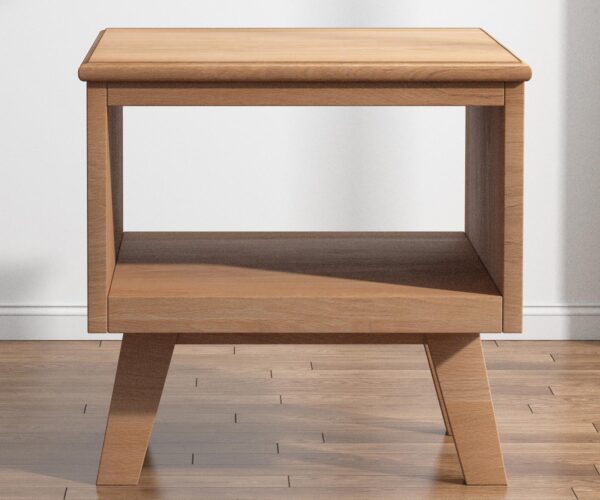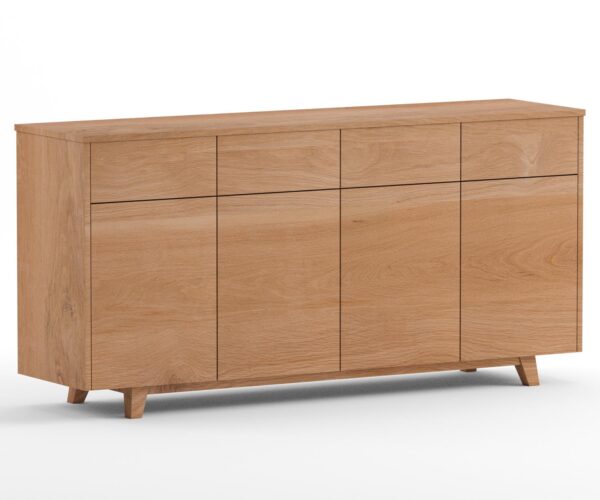The Real Reason Your Healthcare Furniture Isn’t Lasting: What Manufacturers Don’t Want You to Know

When you invest in healthcare furniture, you expect it to endure the rigours of daily use, from patient care to constant cleaning and sanitisation. But what if your furniture isn’t holding up as expected? If you’ve found yourself constantly replacing chairs, tables, and other essential pieces, you’re not alone. The problem may not be your facility’s unique demands but rather something manufacturers aren’t eager to discuss.
In this article, we’ll uncover the hidden factors contributing to the premature wear and tear of healthcare furniture and why understanding these issues is crucial for making smarter procurement decisions.
1. Material Shortcuts: The Hidden Compromise
One of the most common reasons healthcare furniture fails prematurely is due to the materials used. While manufacturers may advertise their furniture as durable, the reality is that some cut corners by using lower-grade materials that look good on the surface but lack the strength to withstand long-term use.
What You Need to Know:
- Fabric Quality: Some manufacturers opt for cheaper, less durable fabrics that quickly wear out under constant use and cleaning. Fabrics with low abrasion resistance, measured in Martindale rubs, won’t stand up to the frequent cleaning cycles required in healthcare environments.
- Timber and Frame Construction: In an effort to reduce costs, some manufacturers may use weaker, composite woods or lighter metals in their frames, which can compromise the furniture’s structural integrity over time.
- Coatings and Finishes: Some manufacturers may use cheaper coatings or finishes that look appealing but quickly wear off or degrade when exposed to harsh cleaning chemicals, leading to a decline in appearance and protection over time.
- Glue and Fastening Quality: The adhesives and fasteners used in furniture construction can greatly affect its durability. Inferior glues or weak fasteners may cause joints to loosen or components to separate, leading to structural failures.
- Foam Density: The foam used in cushions or seatings can vary in density and resilience. Lower-density foam may lose its shape and comfort quickly, resulting in sagging cushions and a shorter lifespan for seating furniture.
2. Inadequate Testing and Compliance
Healthcare environments are unique in their demands. Furniture isn’t just a fixture; it’s a tool that must support various patient needs, withstand frequent sanitation, and endure heavy usage. Unfortunately, not all manufacturers rigorously test their products to meet these specific challenges.
What You Need to Know:
- Testing Standards: High-quality healthcare furniture should meet stringent testing standards for durability, including weight capacity, stability, and fabric resistance to cleaning agents. However, some manufacturers may not adhere to these rigorous testing protocols, resulting in furniture that looks great initially but quickly degrades in real-world conditions.
- Compliance Issues: Healthcare furniture must also comply with specific regulations, such as antimicrobial treatments and fire retardancy. Failing to meet these standards not only shortens the furniture’s lifespan but also puts patients and staff at risk.
- Overlooked Stress Tests: Some manufacturers may skip rigorous stress tests that simulate long-term, heavy use, leading to furniture that performs well initially but deteriorates quickly under the continuous demands of a healthcare setting.
- Chemical Resistance: Furniture in healthcare environments is often exposed to harsh cleaning agents. If the materials haven’t been properly tested for chemical resistance, they may degrade, discolour, or weaken faster than expected.
- Inconsistent Quality Control: Inconsistent quality control during production can result in variability between pieces, with some items meeting standards while others fall short, leading to unpredictable performance and durability.
3. The Allure of Aesthetics Over Functionality
In recent years, there’s been a growing trend toward designing healthcare environments that feel more like home, with an emphasis on aesthetics. While this shift is important for patient comfort, it can lead to compromises in functionality if not done thoughtfully.
What You Need to Know:
- Design vs. Durability: Some manufacturers prioritise trendy designs over the practical needs of a healthcare setting. Soft, luxurious fabrics and stylish, lightweight frames may look appealing, but they may not hold up to the heavy use and frequent cleaning typical of a healthcare environment.
- Ergonomics Overlooked: Furniture that is not fit-for-purpose and prioritises design over ergonomics can lead to increased wear and tear. For example, chairs that lack proper support may suffer from sagging cushions and weakened frames after only a short period of use.
- Maintenance Challenges: Aesthetically-driven designs often incorporate intricate details or non-standard materials that can be difficult to clean and maintain. This can lead to quicker deterioration and higher maintenance costs.
- Comfort vs. Design: Furniture that focuses heavily on visual appeal may overlook essential ergonomic features. This can result in discomfort for users, particularly in settings where extended periods of use are common, such as waiting rooms or patient lounges.
- Integration Issues: Stylish furniture might not always fit seamlessly with existing healthcare equipment and infrastructure. For instance, non-standard dimensions or shapes can create practical issues, such as inadequate space for medical equipment or difficulties in accommodating mobility aids.
4. Poor After-Sales Support and Maintenance
Even the highest-quality furniture will eventually need maintenance or repair. However, inadequate after-sales support can turn a minor issue into a major problem, leading to premature replacements.
What You Need to Know:
- Limited Warranties: Some manufacturers offer limited warranties that do not cover the full range of potential issues, leaving healthcare facilities to bear the cost of repairs or replacements.
- Lack of Spare Parts: If spare parts aren’t readily available or if the manufacturer no longer supports the model you purchased, even minor damage can render the furniture unusable.
- Inadequate Repair Services: Some manufacturers or suppliers may not provide timely or effective repair services, leading to prolonged downtime and inconvenience in your facility. It’s important to check the availability and responsiveness of repair services before making a purchase.
- Complex Maintenance Requirements: Furniture that requires complex or specialised maintenance can become a burden, especially if the manufacturer doesn’t offer clear guidance or support. Ensure that maintenance procedures are straightforward and that support is readily available.
- Hidden Costs: Be aware of any hidden costs associated with maintaining or repairing the furniture. Some manufacturers might not disclose the full extent of these costs upfront, which can lead to unexpected expenses down the line.
5. The Bottom Line: Making Smarter Choices
The premature failure of healthcare furniture often stems from a combination of material compromises, inadequate testing, aesthetic-driven designs, and poor after-sales support. While manufacturers may not be forthcoming about these issues, understanding them is key to making smarter procurement decisions.
What You Can Do:
- Demand Transparency: Ask manufacturers detailed questions about the materials used, the testing processes, and compliance with healthcare-specific standards.
- Prioritise Durability: Choose furniture that is designed specifically for healthcare environments, prioritising durability and functionality over mere aesthetics.
- Review Warranties and Support: Ensure that the furniture you purchase is backed by a robust warranty and that spare parts will be available for the foreseeable future.
- Conduct Thorough Research: Investigate various manufacturers and their products. Look for reviews and case studies from other healthcare facilities to gauge the reliability and durability of their furniture.
- Request Samples: Whenever possible, request samples or prototypes of the furniture to evaluate its quality, durability, and suitability for your specific needs before making a bulk purchase.
- Consult with Experts: Engage with industry consultants or specialists who can provide insights into the best practices for healthcare furniture procurement and help you make informed decisions based on your facility’s unique requirements.
By being informed and asking the right questions, you can avoid the pitfalls of prematurely failing furniture and ensure that your healthcare facility is equipped with pieces that will truly stand the test of time.
Healthcare Furniture Made in Australia
Explore our range of fit-for-purpose armchairs designed for healthcare environments.
More News
The Real Reason Your Healthcare Furniture Isn’t Lasting: What Manufacturers Don’t Want You to Know

When you invest in healthcare furniture, you expect it to endure the rigours of daily use, from patient care to constant cleaning and sanitisation. But what if your furniture isn’t holding up as expected? If you’ve found yourself constantly replacing chairs, tables, and other essential pieces, you’re not alone. The problem may not be your facility’s unique demands but rather something manufacturers aren’t eager to discuss.
In this article, we’ll uncover the hidden factors contributing to the premature wear and tear of healthcare furniture and why understanding these issues is crucial for making smarter procurement decisions.
1. Material Shortcuts: The Hidden Compromise
One of the most common reasons healthcare furniture fails prematurely is due to the materials used. While manufacturers may advertise their furniture as durable, the reality is that some cut corners by using lower-grade materials that look good on the surface but lack the strength to withstand long-term use.
What You Need to Know:
- Fabric Quality: Some manufacturers opt for cheaper, less durable fabrics that quickly wear out under constant use and cleaning. Fabrics with low abrasion resistance, measured in Martindale rubs, won’t stand up to the frequent cleaning cycles required in healthcare environments.
- Timber and Frame Construction: In an effort to reduce costs, some manufacturers may use weaker, composite woods or lighter metals in their frames, which can compromise the furniture’s structural integrity over time.
- Coatings and Finishes: Some manufacturers may use cheaper coatings or finishes that look appealing but quickly wear off or degrade when exposed to harsh cleaning chemicals, leading to a decline in appearance and protection over time.
- Glue and Fastening Quality: The adhesives and fasteners used in furniture construction can greatly affect its durability. Inferior glues or weak fasteners may cause joints to loosen or components to separate, leading to structural failures.
- Foam Density: The foam used in cushions or seatings can vary in density and resilience. Lower-density foam may lose its shape and comfort quickly, resulting in sagging cushions and a shorter lifespan for seating furniture.
2. Inadequate Testing and Compliance
Healthcare environments are unique in their demands. Furniture isn’t just a fixture; it’s a tool that must support various patient needs, withstand frequent sanitation, and endure heavy usage. Unfortunately, not all manufacturers rigorously test their products to meet these specific challenges.
What You Need to Know:
- Testing Standards: High-quality healthcare furniture should meet stringent testing standards for durability, including weight capacity, stability, and fabric resistance to cleaning agents. However, some manufacturers may not adhere to these rigorous testing protocols, resulting in furniture that looks great initially but quickly degrades in real-world conditions.
- Compliance Issues: Healthcare furniture must also comply with specific regulations, such as antimicrobial treatments and fire retardancy. Failing to meet these standards not only shortens the furniture’s lifespan but also puts patients and staff at risk.
- Overlooked Stress Tests: Some manufacturers may skip rigorous stress tests that simulate long-term, heavy use, leading to furniture that performs well initially but deteriorates quickly under the continuous demands of a healthcare setting.
- Chemical Resistance: Furniture in healthcare environments is often exposed to harsh cleaning agents. If the materials haven’t been properly tested for chemical resistance, they may degrade, discolour, or weaken faster than expected.
- Inconsistent Quality Control: Inconsistent quality control during production can result in variability between pieces, with some items meeting standards while others fall short, leading to unpredictable performance and durability.
3. The Allure of Aesthetics Over Functionality
In recent years, there’s been a growing trend toward designing healthcare environments that feel more like home, with an emphasis on aesthetics. While this shift is important for patient comfort, it can lead to compromises in functionality if not done thoughtfully.
What You Need to Know:
- Design vs. Durability: Some manufacturers prioritise trendy designs over the practical needs of a healthcare setting. Soft, luxurious fabrics and stylish, lightweight frames may look appealing, but they may not hold up to the heavy use and frequent cleaning typical of a healthcare environment.
- Ergonomics Overlooked: Furniture that is not fit-for-purpose and prioritises design over ergonomics can lead to increased wear and tear. For example, chairs that lack proper support may suffer from sagging cushions and weakened frames after only a short period of use.
- Maintenance Challenges: Aesthetically-driven designs often incorporate intricate details or non-standard materials that can be difficult to clean and maintain. This can lead to quicker deterioration and higher maintenance costs.
- Comfort vs. Design: Furniture that focuses heavily on visual appeal may overlook essential ergonomic features. This can result in discomfort for users, particularly in settings where extended periods of use are common, such as waiting rooms or patient lounges.
- Integration Issues: Stylish furniture might not always fit seamlessly with existing healthcare equipment and infrastructure. For instance, non-standard dimensions or shapes can create practical issues, such as inadequate space for medical equipment or difficulties in accommodating mobility aids.
4. Poor After-Sales Support and Maintenance
Even the highest-quality furniture will eventually need maintenance or repair. However, inadequate after-sales support can turn a minor issue into a major problem, leading to premature replacements.
What You Need to Know:
- Limited Warranties: Some manufacturers offer limited warranties that do not cover the full range of potential issues, leaving healthcare facilities to bear the cost of repairs or replacements.
- Lack of Spare Parts: If spare parts aren’t readily available or if the manufacturer no longer supports the model you purchased, even minor damage can render the furniture unusable.
- Inadequate Repair Services: Some manufacturers or suppliers may not provide timely or effective repair services, leading to prolonged downtime and inconvenience in your facility. It’s important to check the availability and responsiveness of repair services before making a purchase.
- Complex Maintenance Requirements: Furniture that requires complex or specialised maintenance can become a burden, especially if the manufacturer doesn’t offer clear guidance or support. Ensure that maintenance procedures are straightforward and that support is readily available.
- Hidden Costs: Be aware of any hidden costs associated with maintaining or repairing the furniture. Some manufacturers might not disclose the full extent of these costs upfront, which can lead to unexpected expenses down the line.
5. The Bottom Line: Making Smarter Choices
The premature failure of healthcare furniture often stems from a combination of material compromises, inadequate testing, aesthetic-driven designs, and poor after-sales support. While manufacturers may not be forthcoming about these issues, understanding them is key to making smarter procurement decisions.
What You Can Do:
- Demand Transparency: Ask manufacturers detailed questions about the materials used, the testing processes, and compliance with healthcare-specific standards.
- Prioritise Durability: Choose furniture that is designed specifically for healthcare environments, prioritising durability and functionality over mere aesthetics.
- Review Warranties and Support: Ensure that the furniture you purchase is backed by a robust warranty and that spare parts will be available for the foreseeable future.
- Conduct Thorough Research: Investigate various manufacturers and their products. Look for reviews and case studies from other healthcare facilities to gauge the reliability and durability of their furniture.
- Request Samples: Whenever possible, request samples or prototypes of the furniture to evaluate its quality, durability, and suitability for your specific needs before making a bulk purchase.
- Consult with Experts: Engage with industry consultants or specialists who can provide insights into the best practices for healthcare furniture procurement and help you make informed decisions based on your facility’s unique requirements.
By being informed and asking the right questions, you can avoid the pitfalls of prematurely failing furniture and ensure that your healthcare facility is equipped with pieces that will truly stand the test of time.
Healthcare Furniture Made in Australia
Explore our range of fit-for-purpose armchairs designed for healthcare environments.
Commercial furniture by room
Based in Brisbane, we’re an Australian manufacturer of aged care furniture, retirement living furniture, hospital & healthcare furniture, hotel & accommodation furniture and student accommodation furniture. We also supply a range of commercial office furniture.
Discover the FHG Look Book: Your Source of Inspiration for Quality Australian-Made Commercial Furniture
- Quality Craftsmanship: See why we’ve been a trusted partner for over 25 years.
- Local Excellence: Learn how our Brisbane team ensures the highest standards.
- Inspiration and Ideas: Find innovative furniture solutions for any environment.
Don’t miss the opportunity to transform your commercial space with FHG’s expertly crafted furniture. Download the FHG Look Book today and start your journey towards exceptional design and quality.































